There are 43 separate colour segments in an Aston Martin 'wing' badge. Each is bounded by a slender line of chrome, which the pads of your fingers will feel if you slide them across the surface of the badge.
The badge’s centrepiece ‘Aston Martin’ lettering is framed by an equally slender rectangle of chrome, with a black infill. It’s an intricate badge, and one that’s usually white, apart from the black background to the Aston Martin characters.
But the remaining 42 segments, which fan out from the badge’s centre like the sun's rays, provide some extra scope for creativity. Zagato Aston Martins, for instance, feature a variation on the badge, and occasionally a bespoke badge will be produced for a customer.
This year, Aston Martin Racing will field several cars in the World Endurance Championship carrying individual wings badges handmade by Vaughtons from the Birmingham Jewellery Quarter, which produces all of Aston Martin’s badges. They appear for the first time on the V8 Aston Martin Vantage GTE racers competing at Silverstone on 16/17 April.
Making them is a surprisingly intricate business, requiring no less than 21 different stages that combine semi-mechanised metal-working, considerable craftsmanship, some baking, chroming, and plenty of polishing. We got the chance not only to observe this process but to then have a go at decorating one.
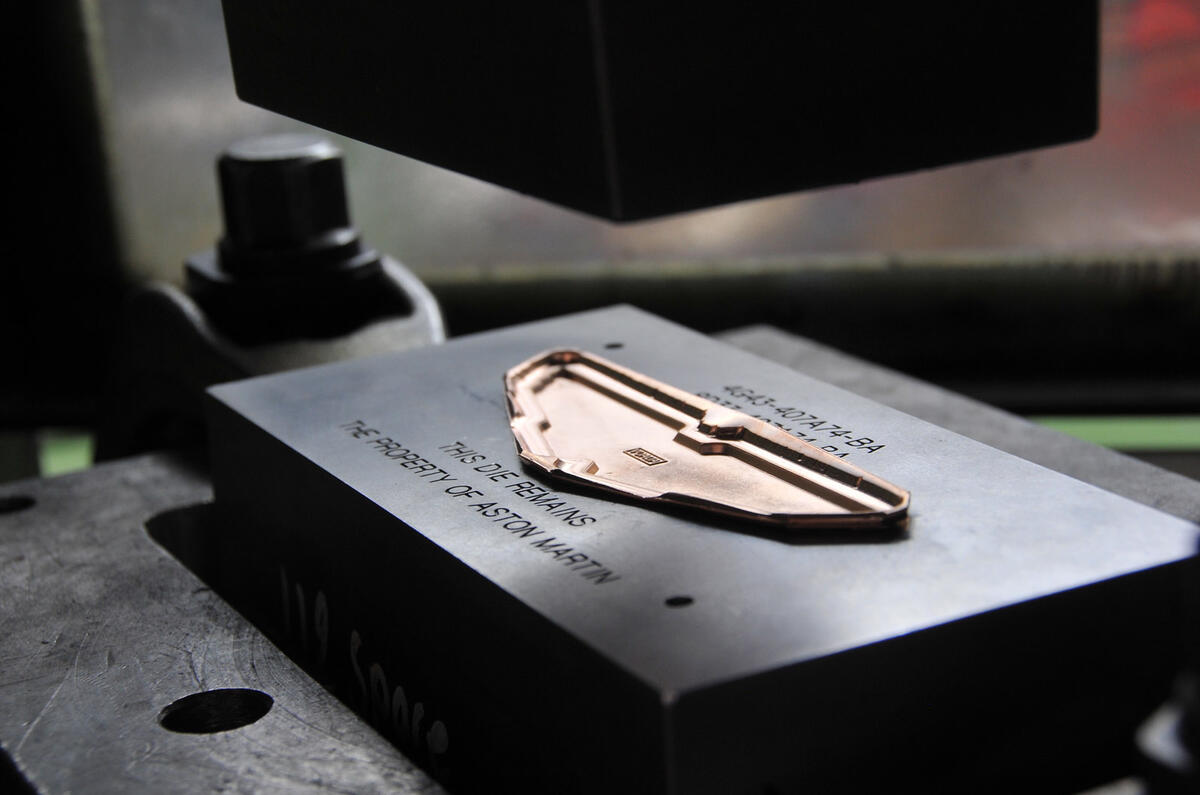
Producing the badge starts with computer-aided design (CAD) data from Aston Martin itself, which is used to make the highly accurate die that will stamp the badge’s baseplate. The process itself has a pre-cut, rectangular strip of copper alloy that enters the stamping machine, to emerge one thump later as a recognisable and fairly detailed core, but with a plinth-like rim of excess copper around it known as flash.
The baseplate is then placed on a small conveyor that propels it into an oven, rather like one of those mechanised hotel toasters. The heat anneals the metal so that it can undergo further stamping to ensure that all the detail emerges without thinning and splitting, after which the flash is cut off.
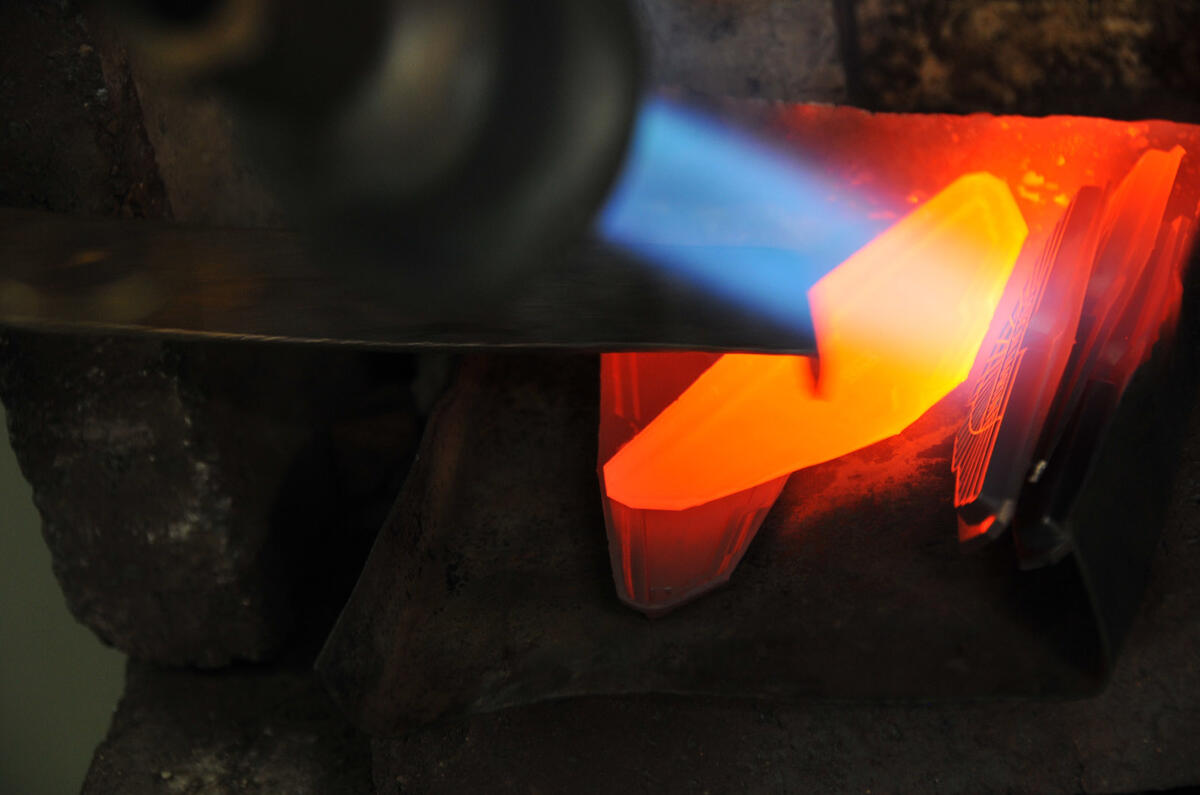
From here the badge travels to the upper floor of this compact brick factory, to a room where the vitreous enamel colouring is added, each colour added individually because they have different baking characteristics. They apply the wet, ground enamel with a small wooden-handled knib, a delicate process that requires patience, a hand steadier than a poker player’s and because of the nature of the material, several repeats of the process.
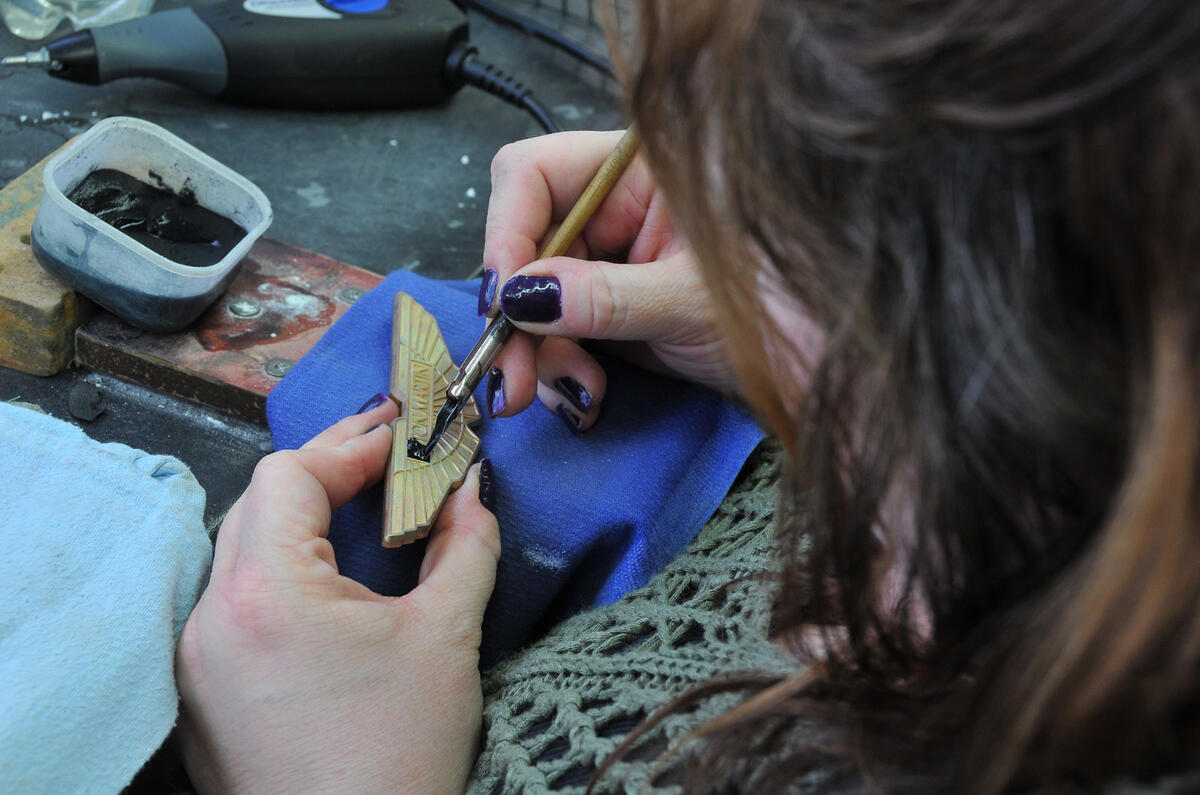
And this is my chance to slow that process down. Enameller Sue Moore invites me to whiten the badge segments needed to produce a Union Jack Aston badge. I scoop a small pellet of enamel into the curve of the knib, dunk it onto a segment and attempt to smooth it towards the ribs defining the segment’s edge.
It’s fiddly stuff, but I make reasonable progress until I realise that the pattern of white segments is asymmetric, to reflect the asymmetry of the Union Jack flag and that I have turned the wrong one white. Moore wipes the enamel out with a cloth, and with another go I discover gently tapping, smoothing and sweeping the little knib can persuade the ooze of enamel to spread into the corners of each segment.
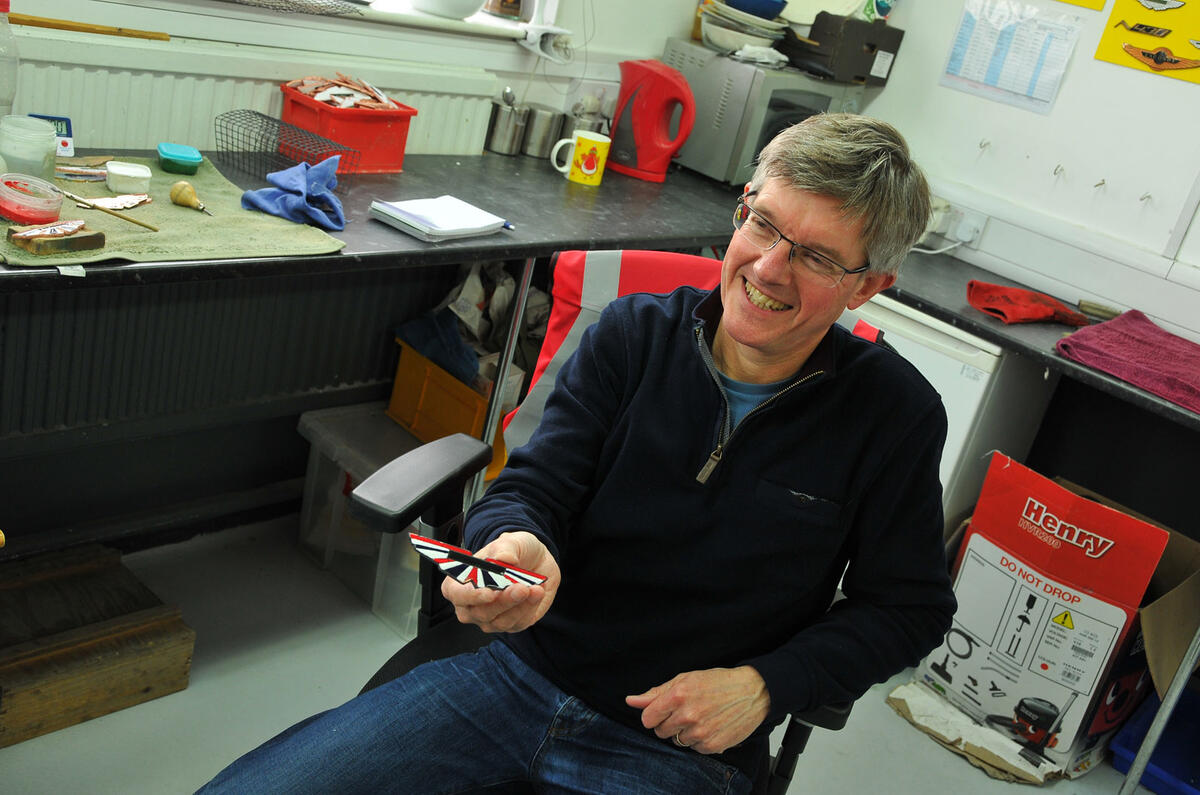
Moore then suggests that I apply some red enamel to another badge. With the confidence of a deluded amateur I start using her technique of lifting one end of the badge, and dropping it onto the little wooden block it’s resting on. If the enamel is liquid enough, the shock of the fall will encourage a slow spread. With a flourish I catch the badge as I raise my hand to lift it a second time, which flips it off the bench. Face down, of course. A spatter of red enamel decorates the floor, and my 12-minute enamelling career is over.
What usually happens next is that the part-enamelled badge is baked to harden the colouring, acid dipped and then linished, which is an eroding process whose severity lies somewhere between grinding and polishing. The linishing will almost certainly reveal the odd defect in the hardened enamel, which is retouched. It’s then baked again, linished, polished and if all is well, the next stage of the enamelling can proceed. This painstaking process demonstrates how it can take 21 stages to produce one badge.
The intermediate linishing and polishing is carried out in a tiny room by two men, with linisher Terry Green working a machine that is as old as his 30-year service with the company. Once this process is complete the badge passes to master polisher Chris Gardner and his colleagues, who apply a very fine polish to both the enamel and the copper base prior to the chroming process, which is preceded by an ultrasonic clean.
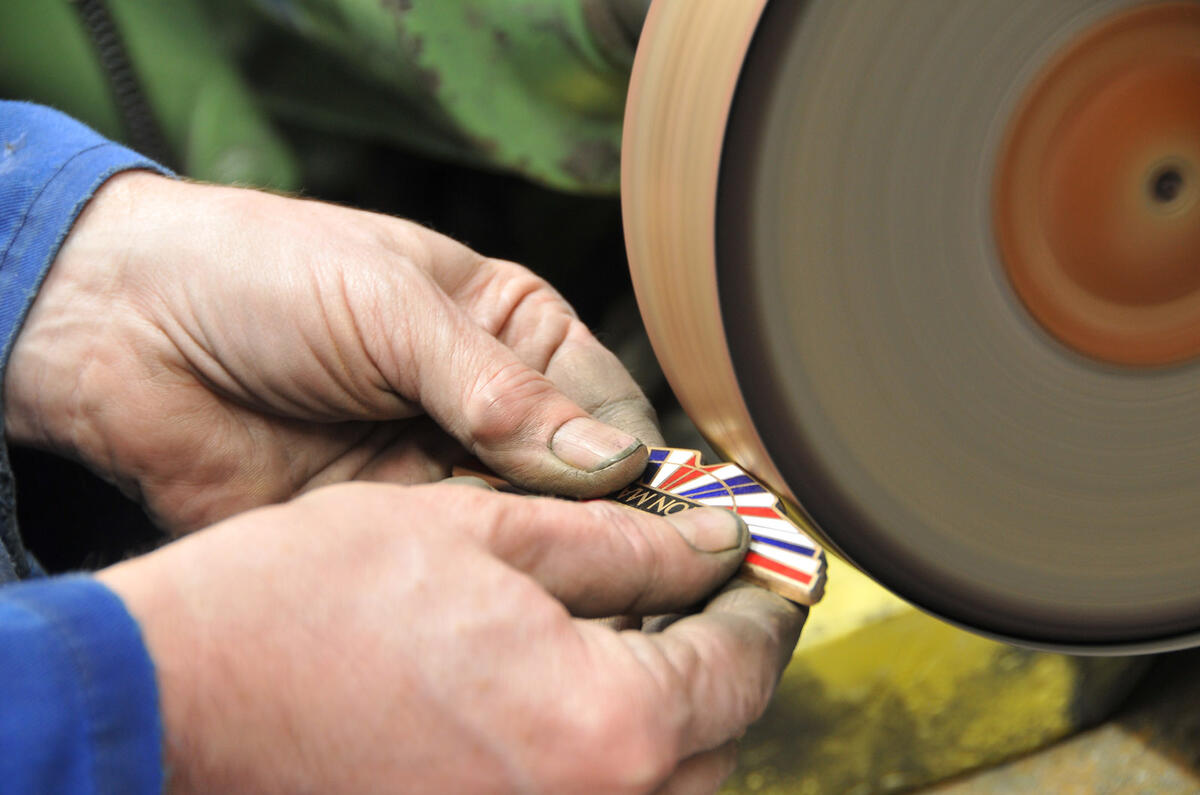
The chrome deposits only on the copper and not the enamel, to produce the fine lines that are such a distinctive element of the wings badge. When you see the process you realise more completely what a beautiful thing it is, and the additional skill needed to incorporate a flag within its design.

There will be nine different designs produced for the V8 Vantage GTE racers; several of them are likely to see plenty of on-track incidents more dramatic than dropping a wings badge to the floor.

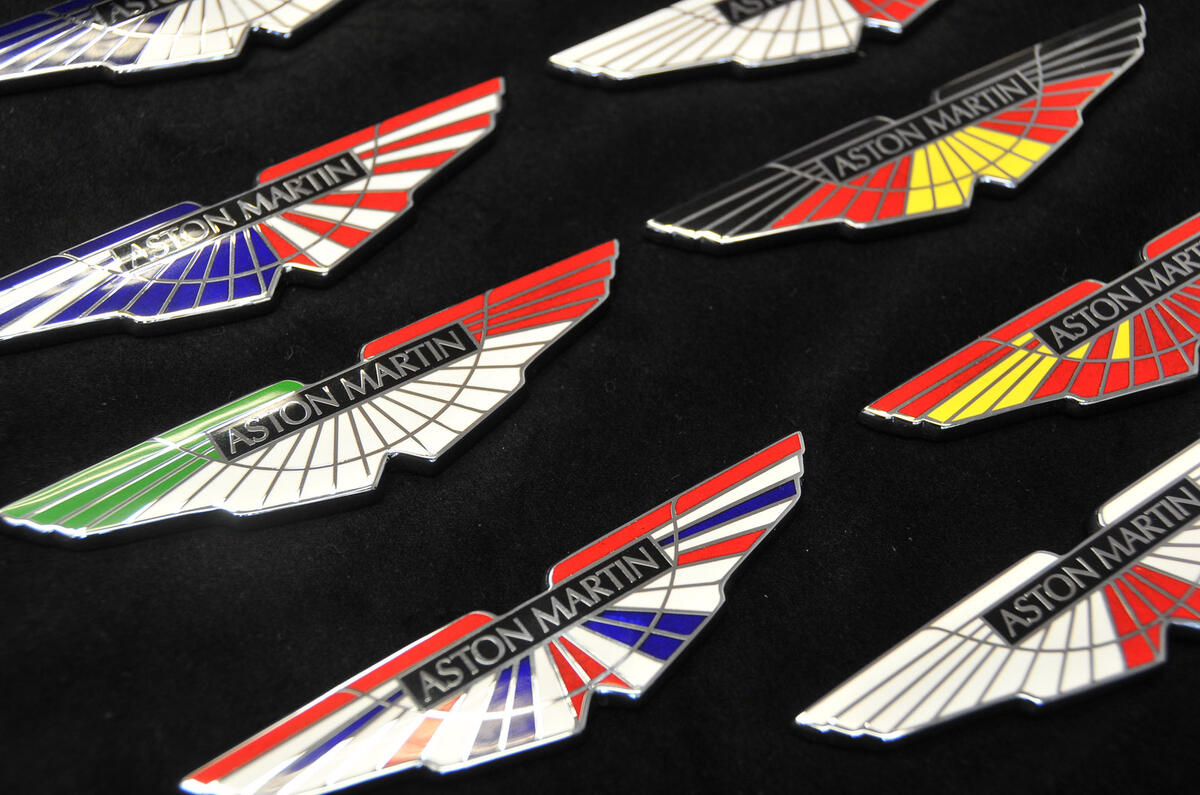
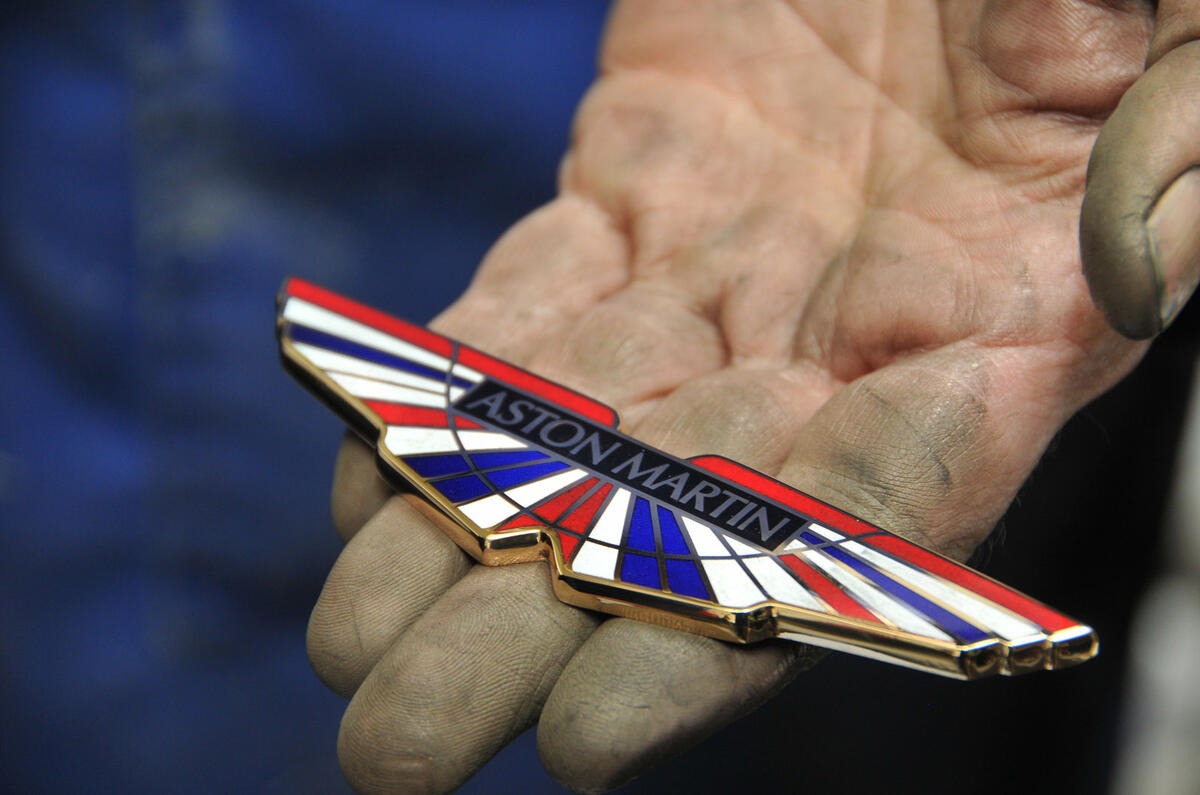

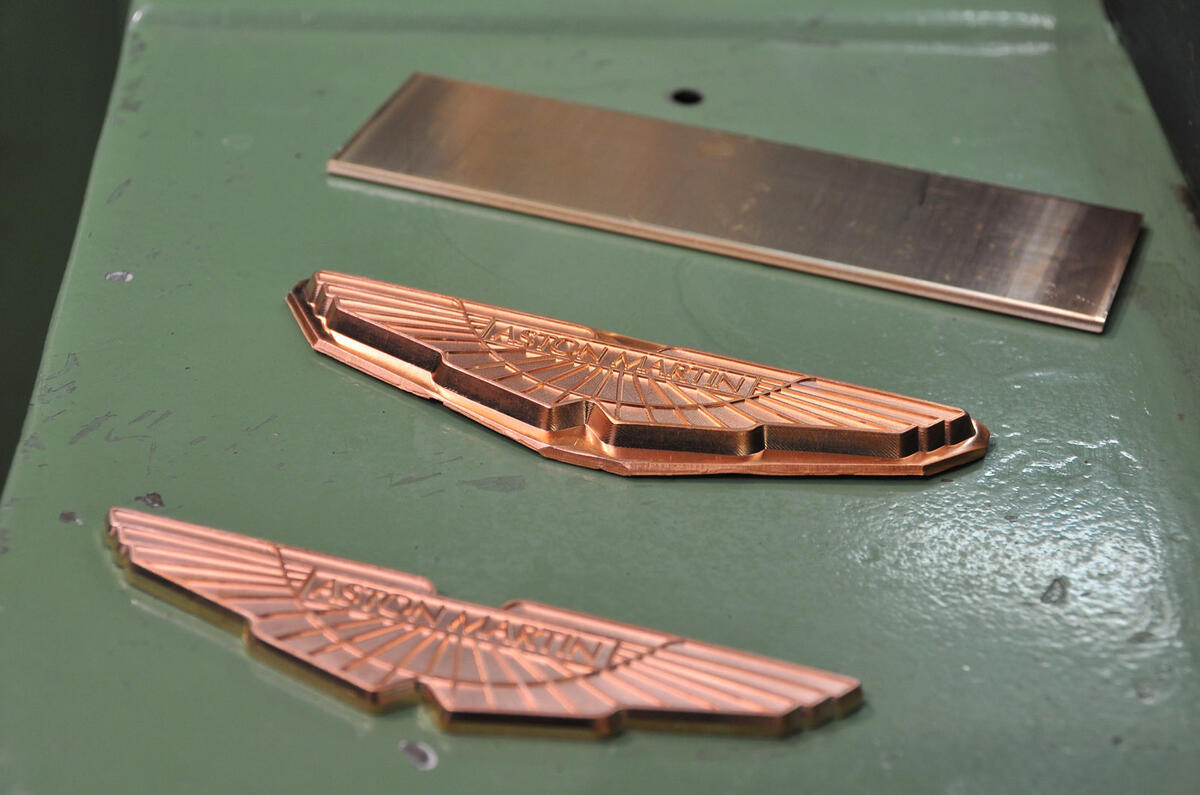
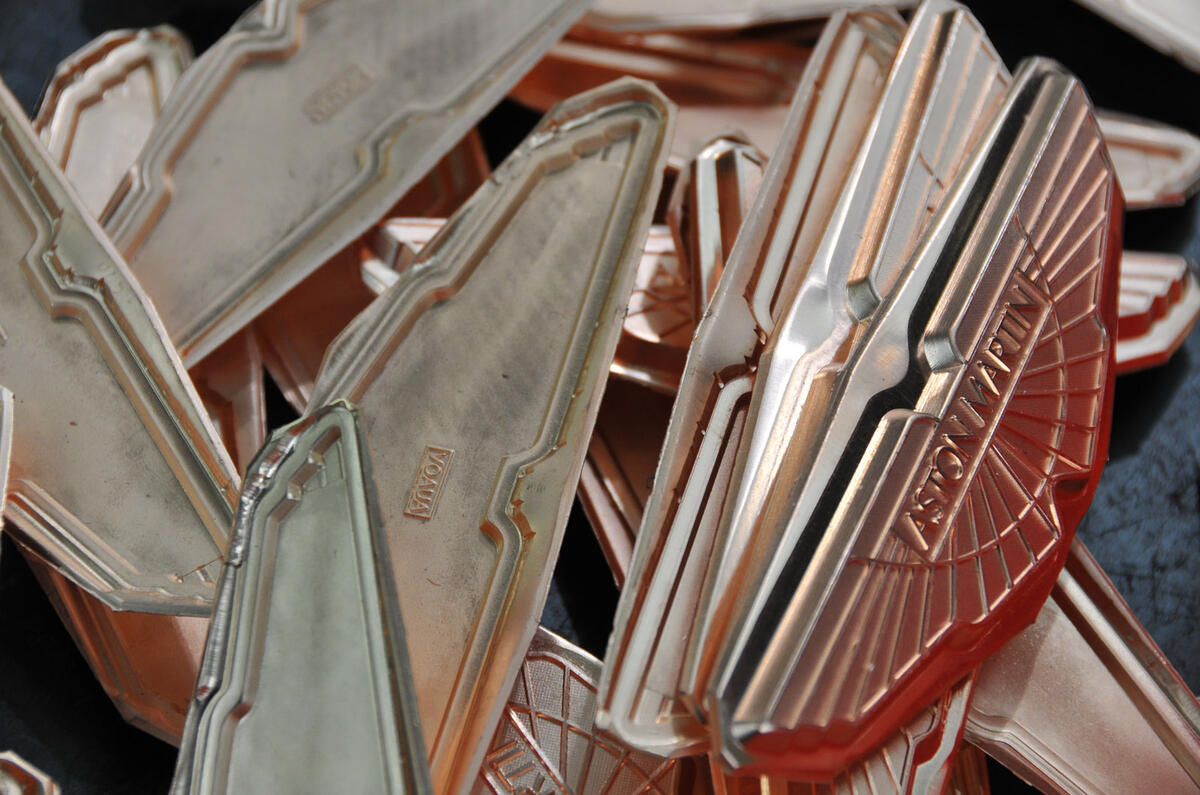
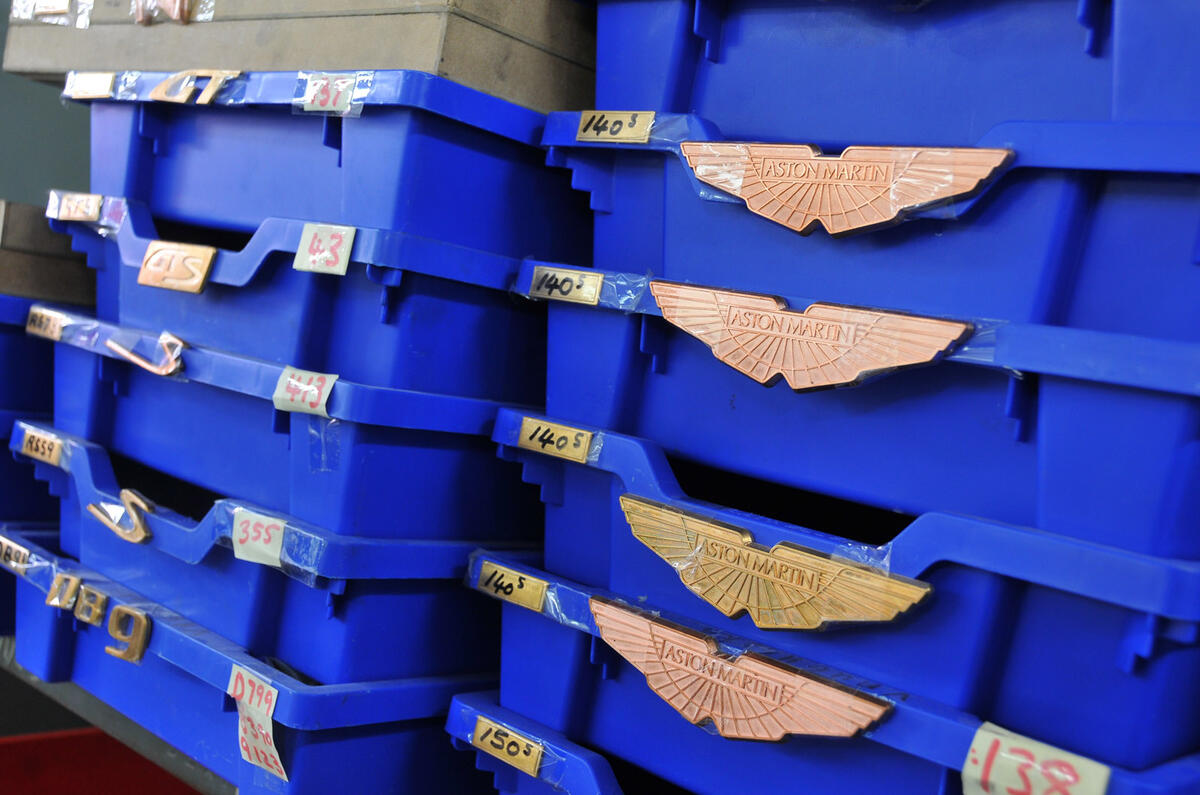

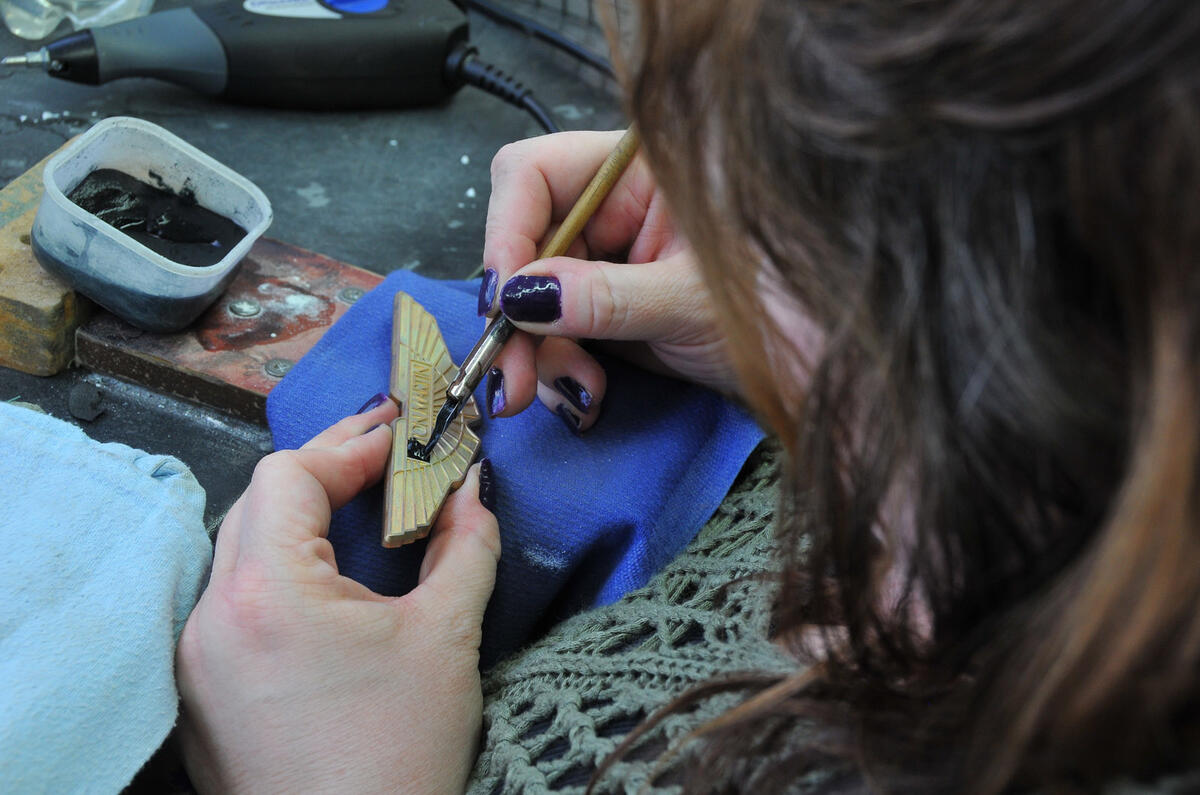
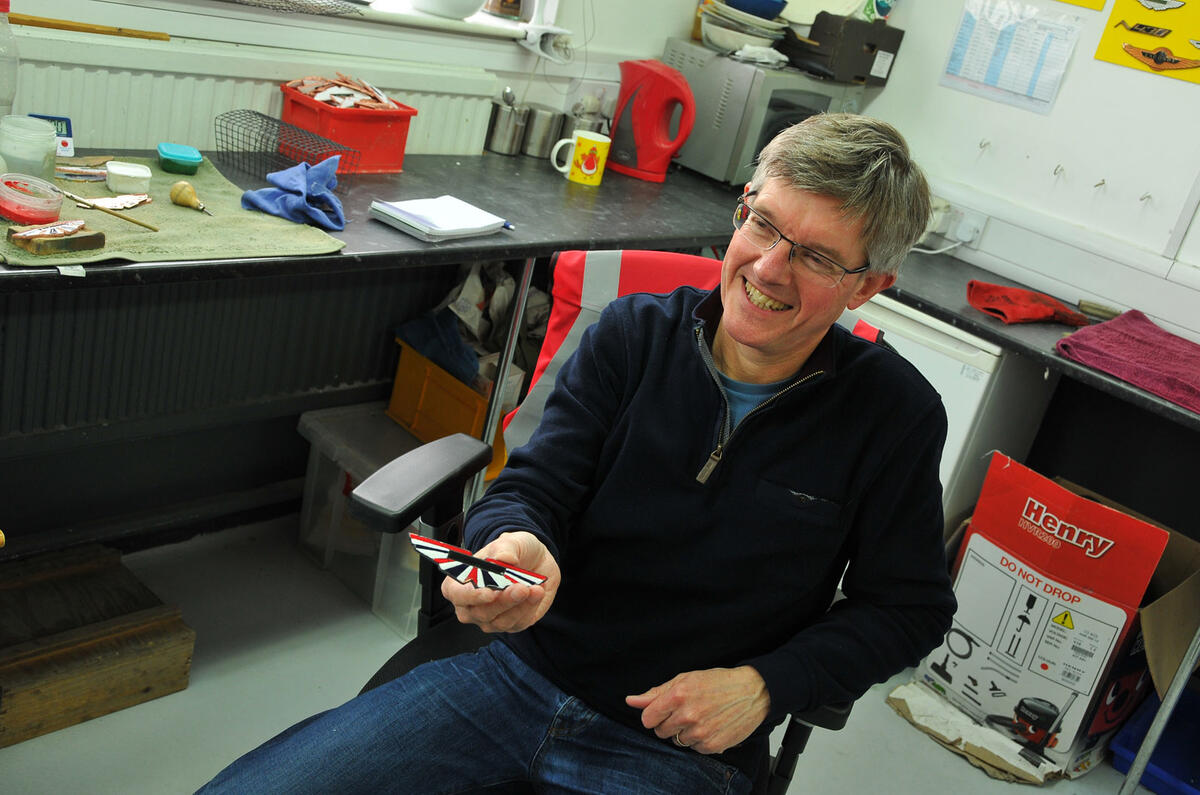
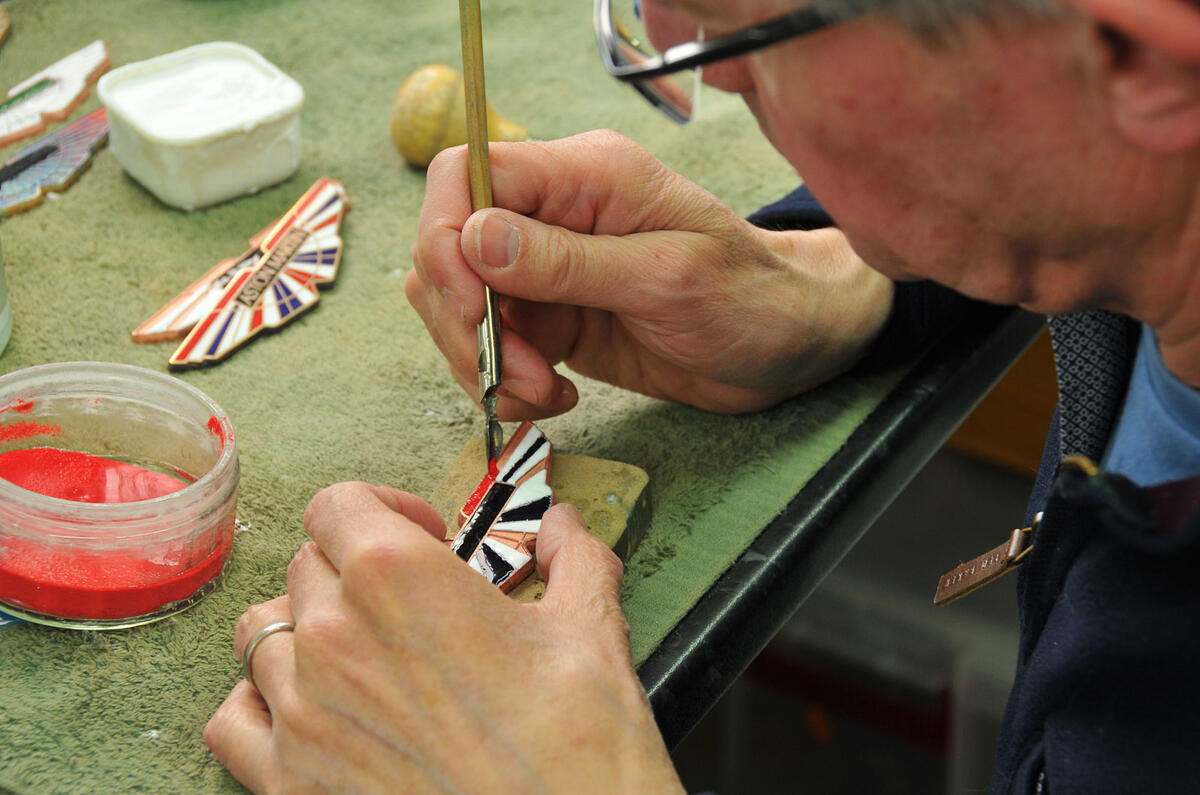
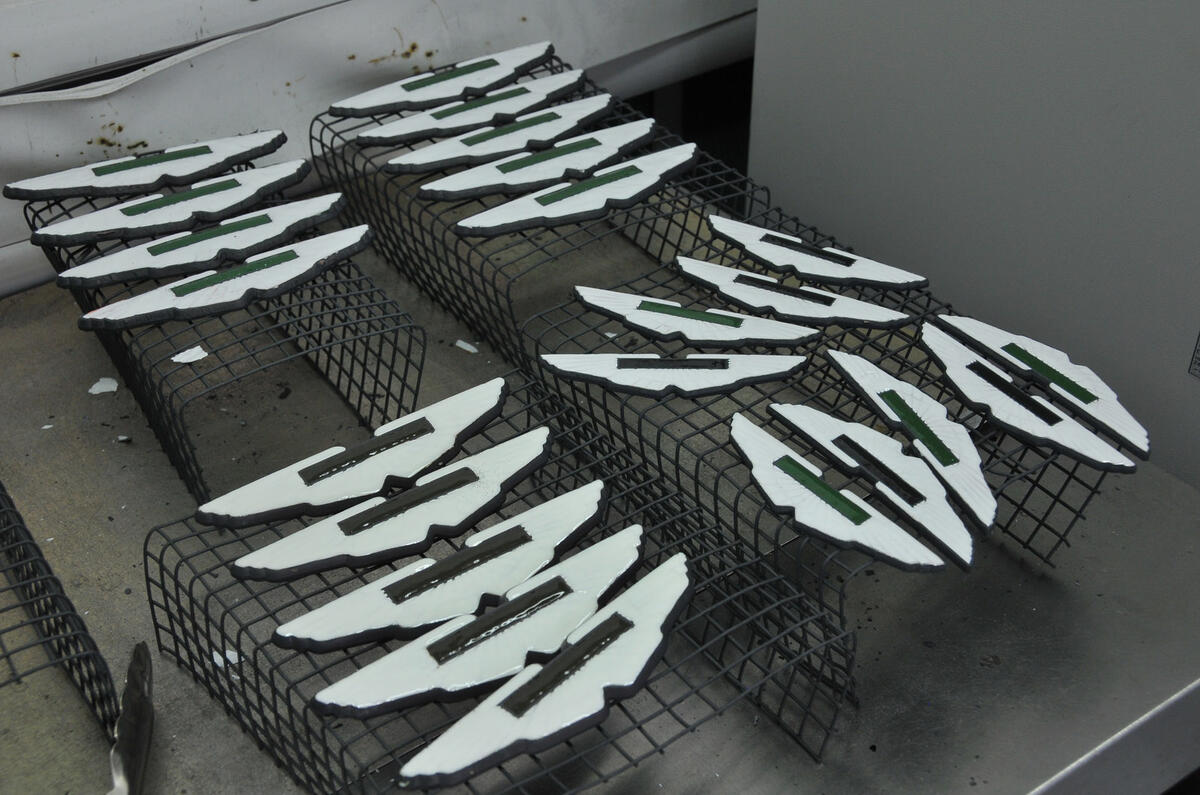
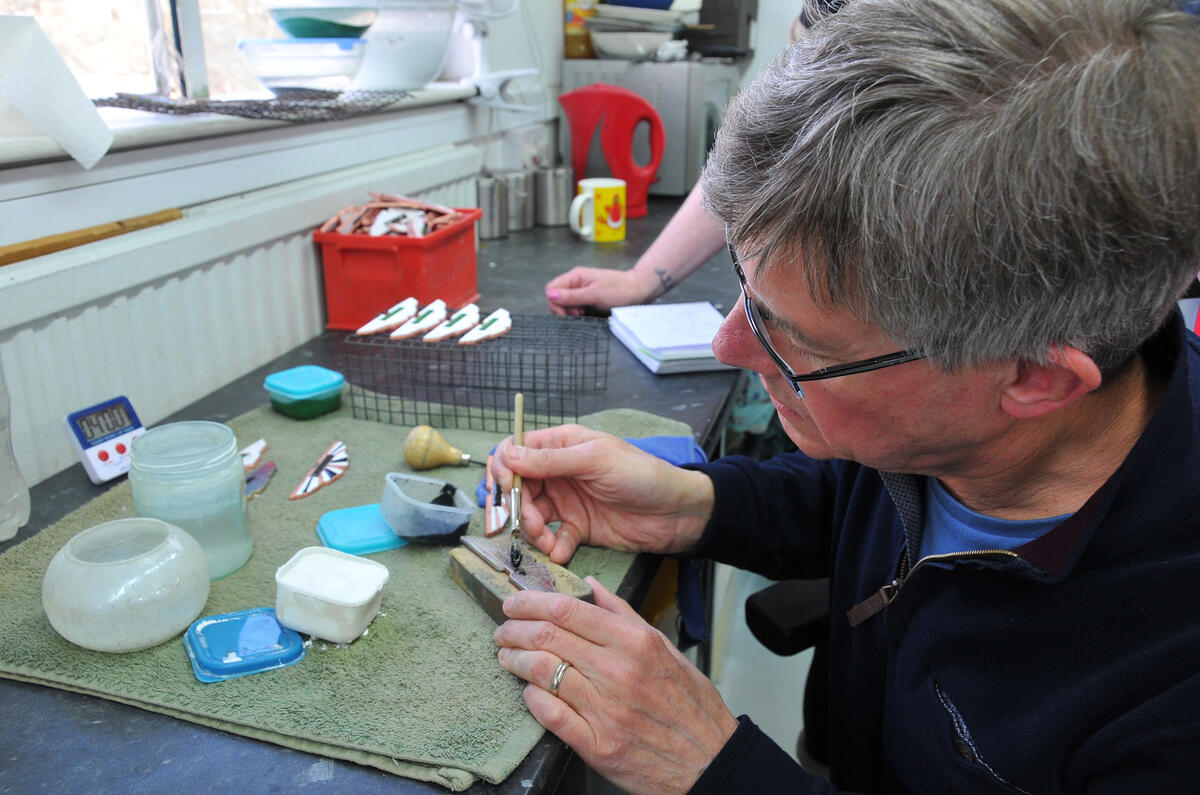
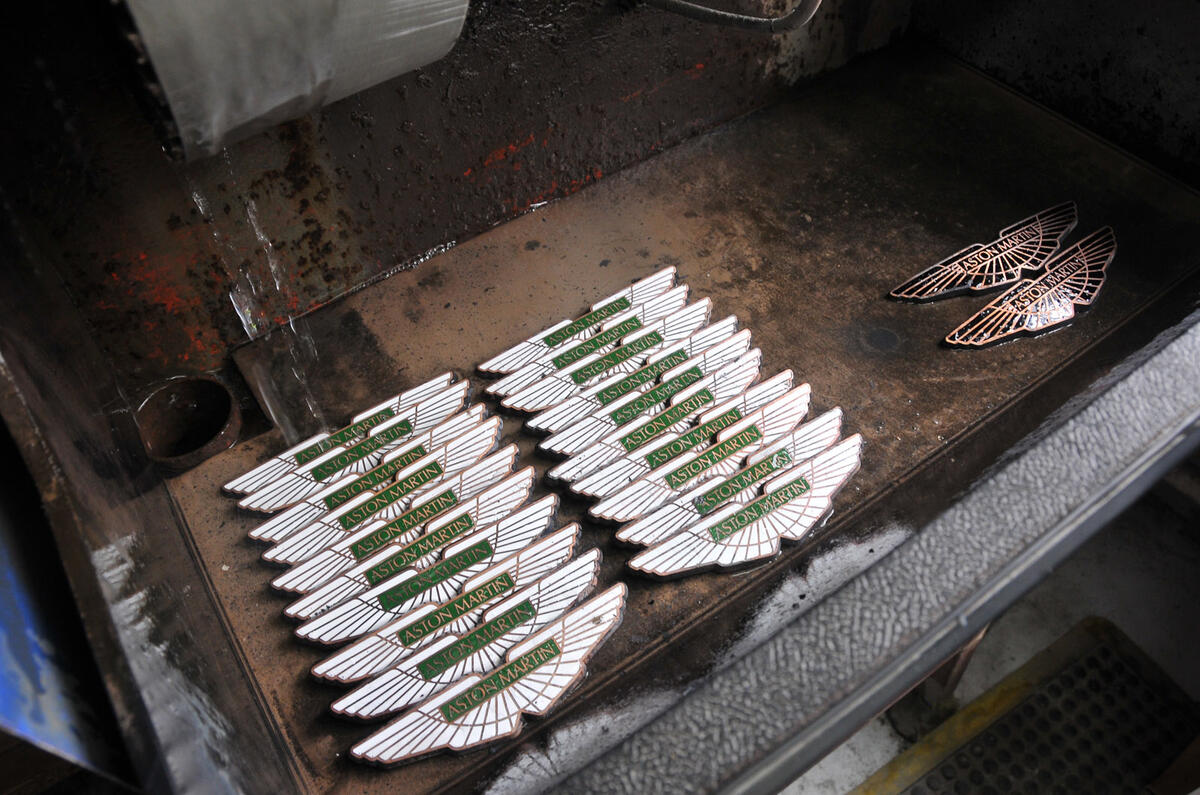

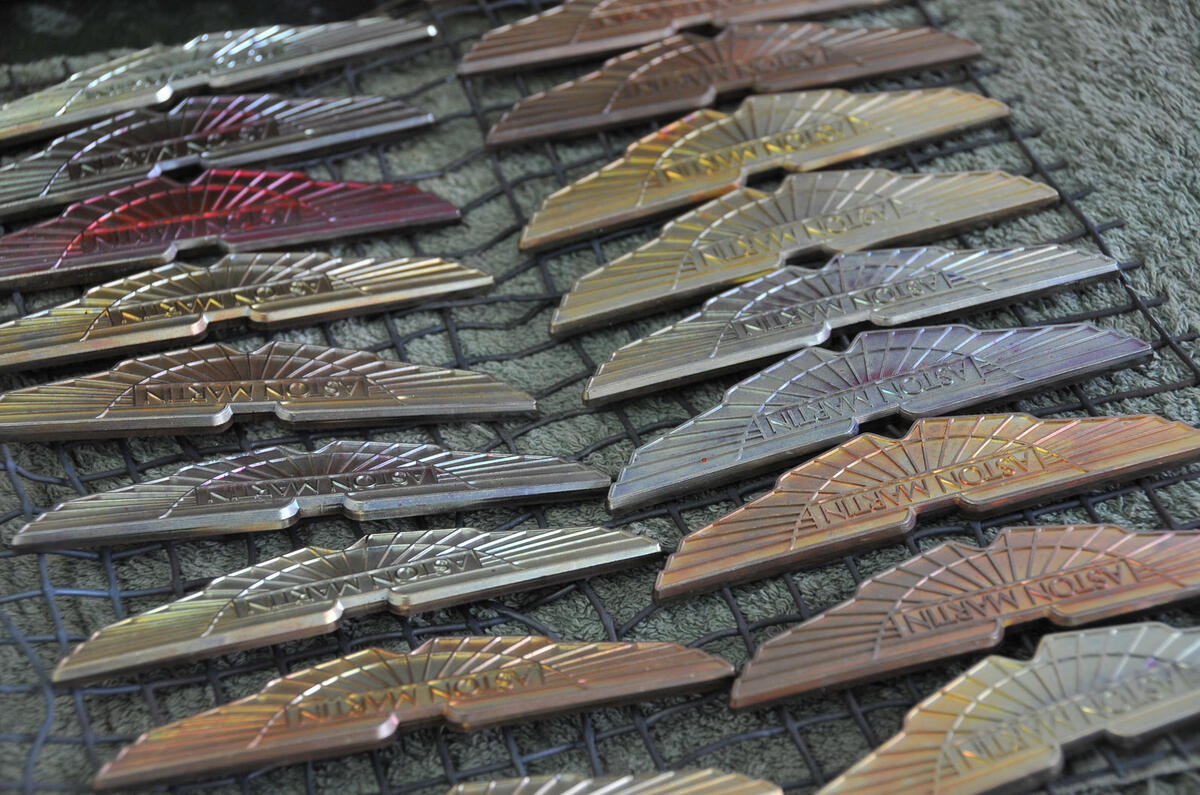
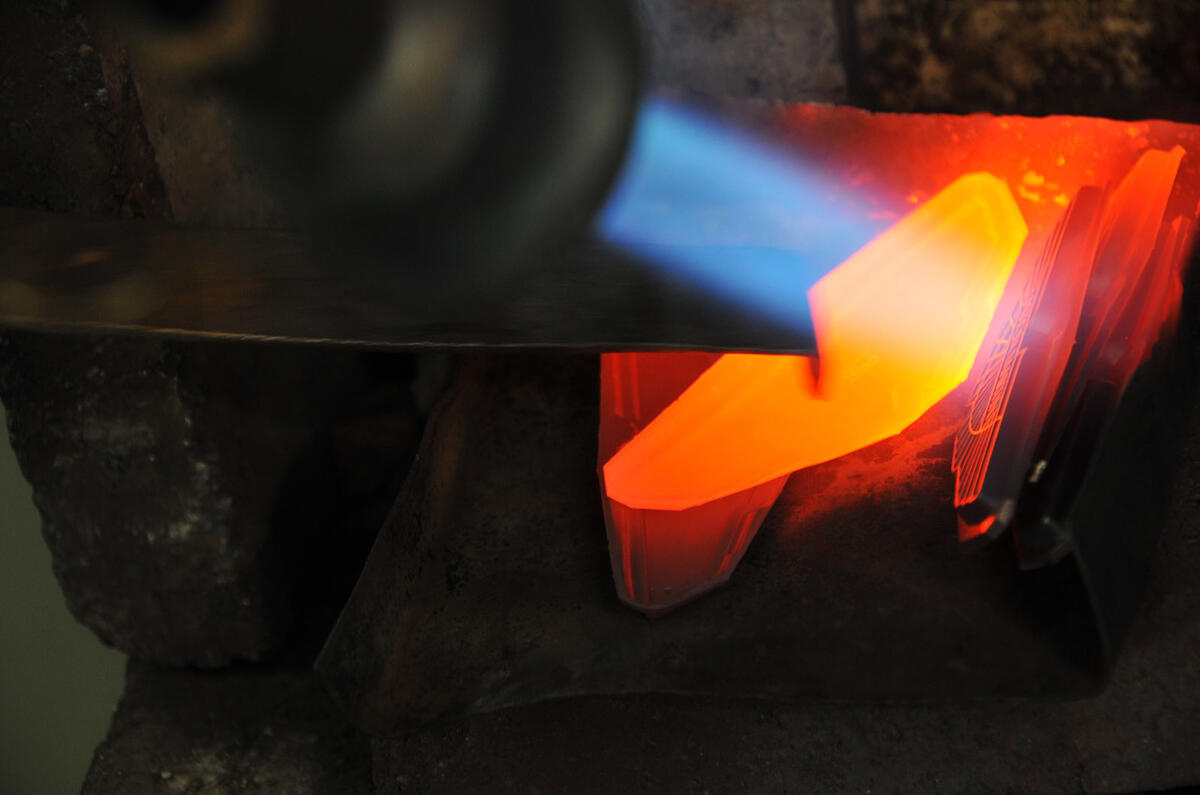
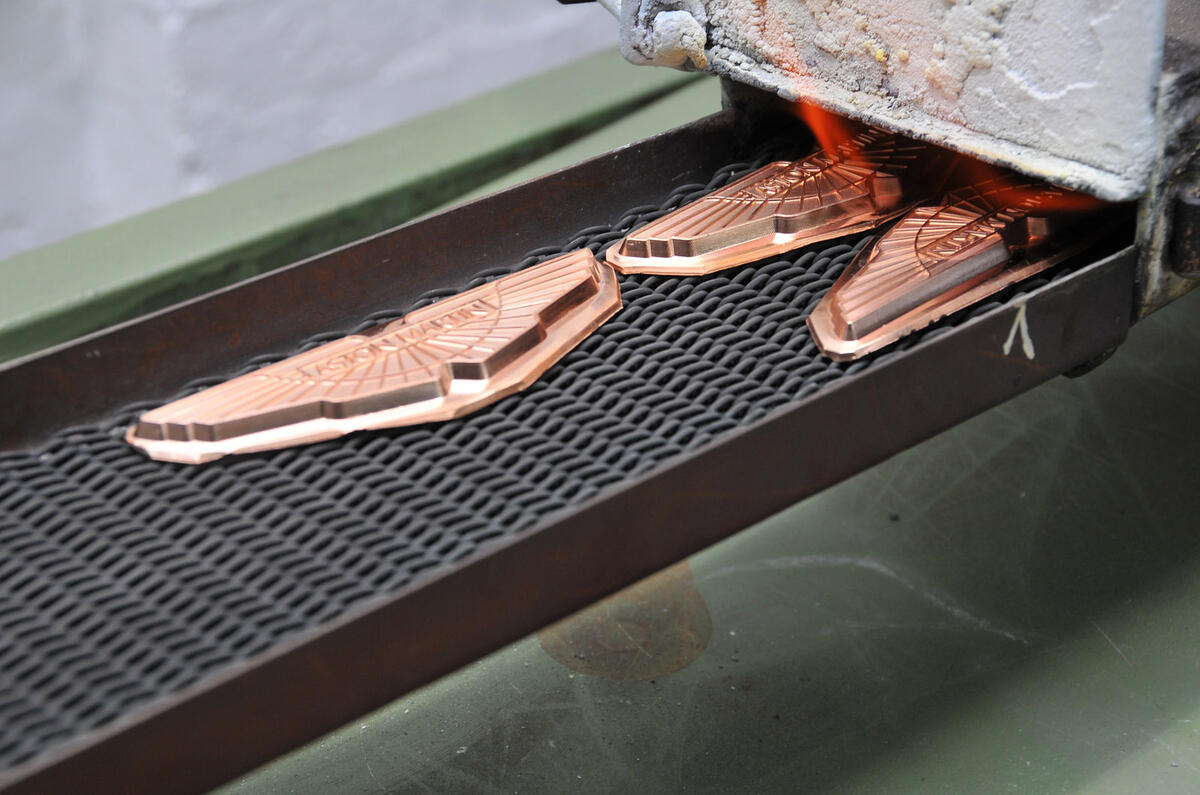
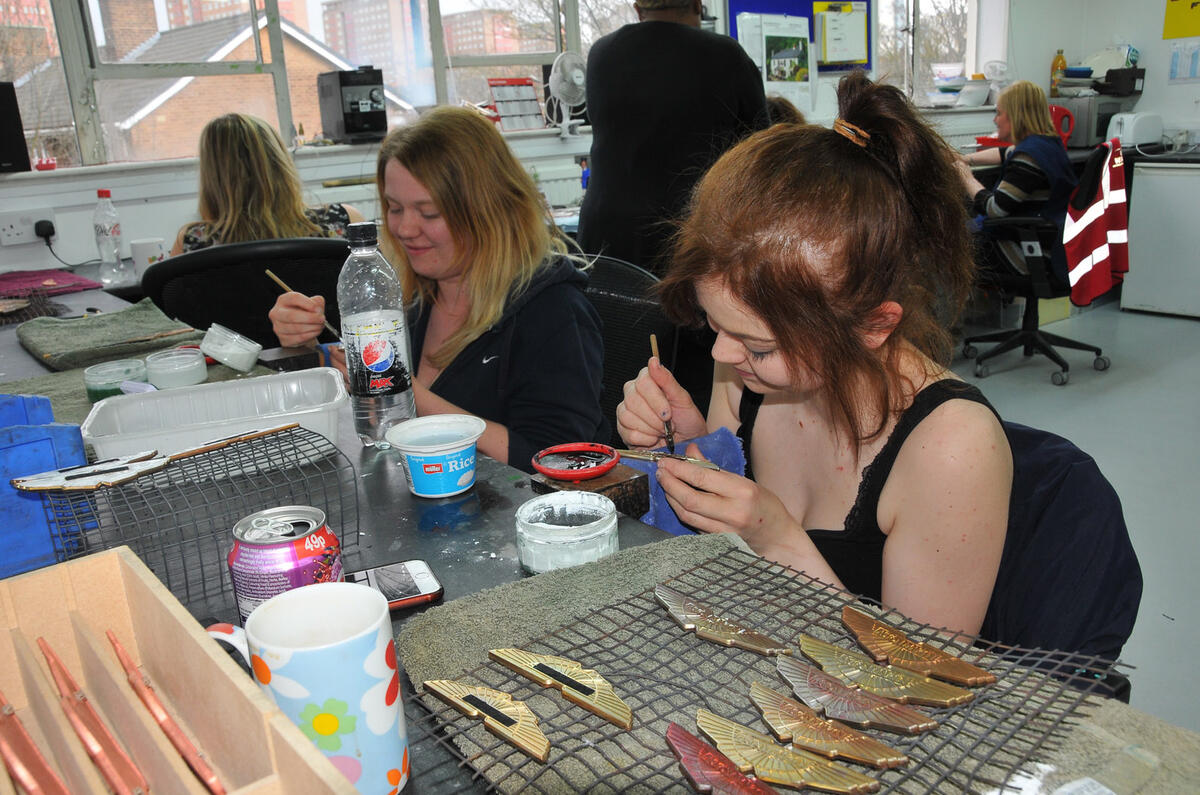
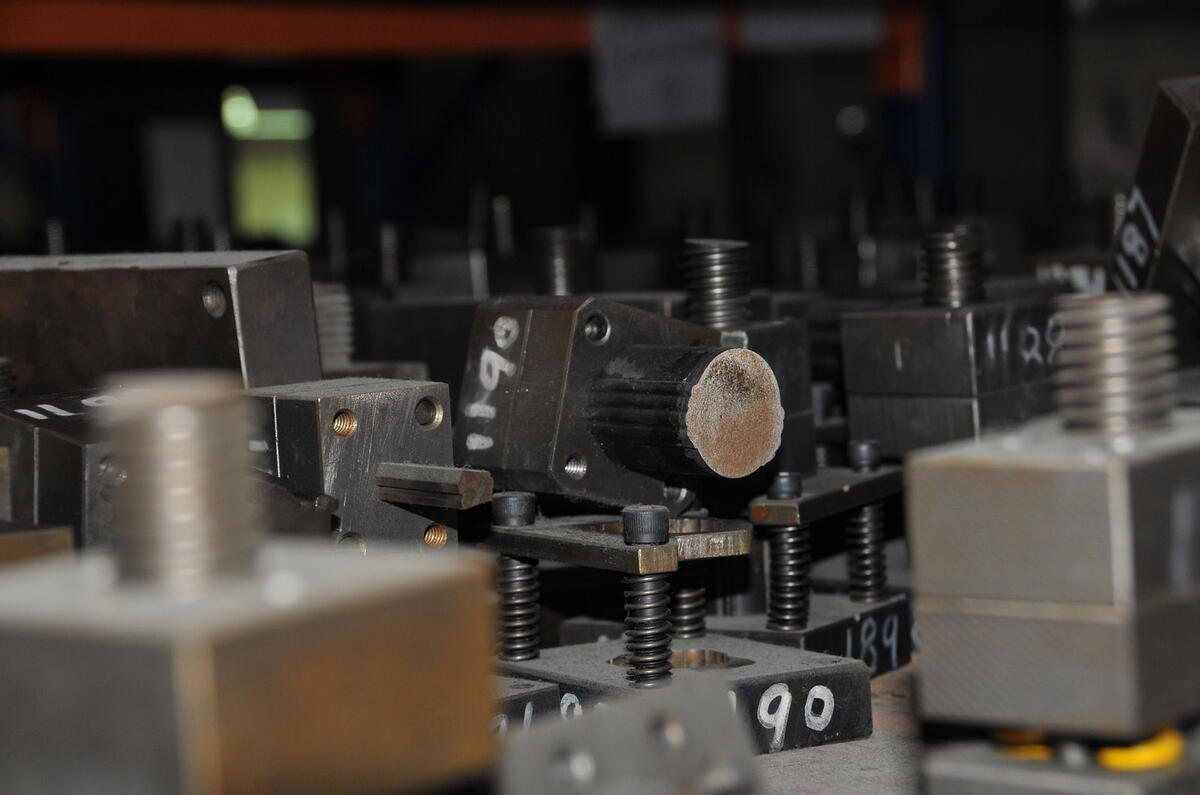
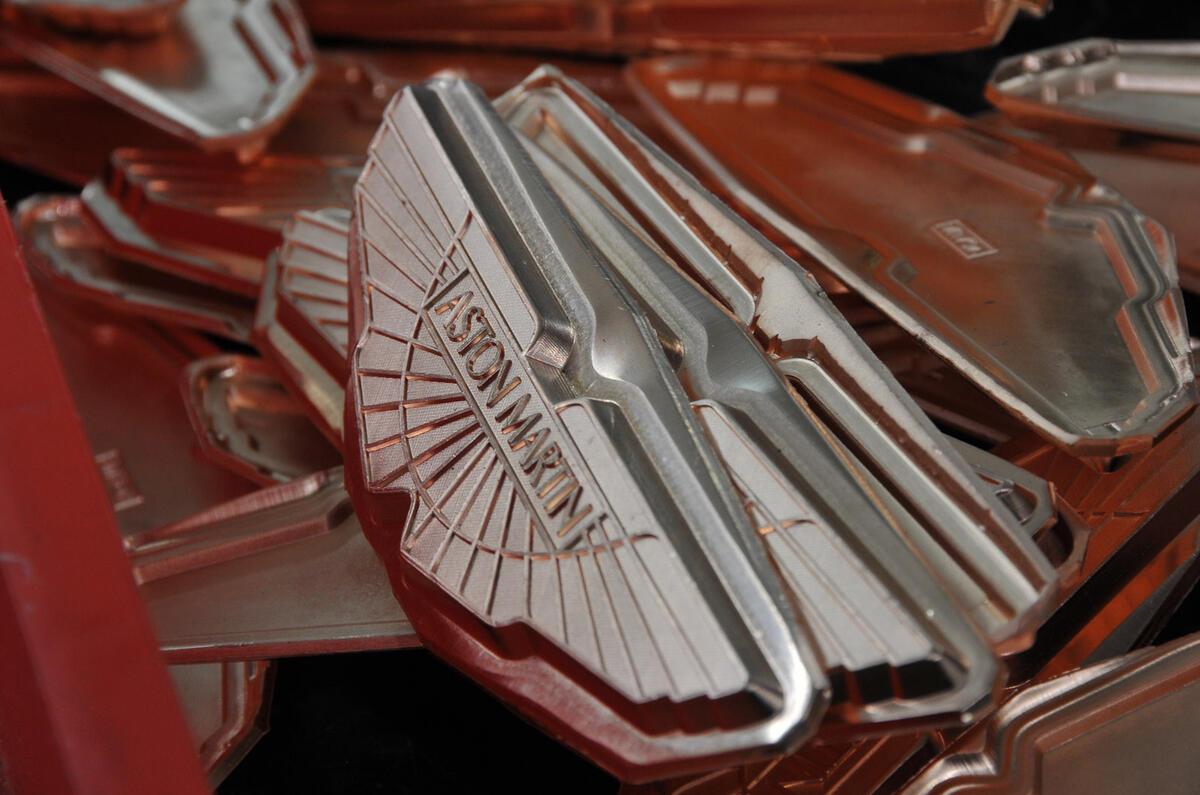
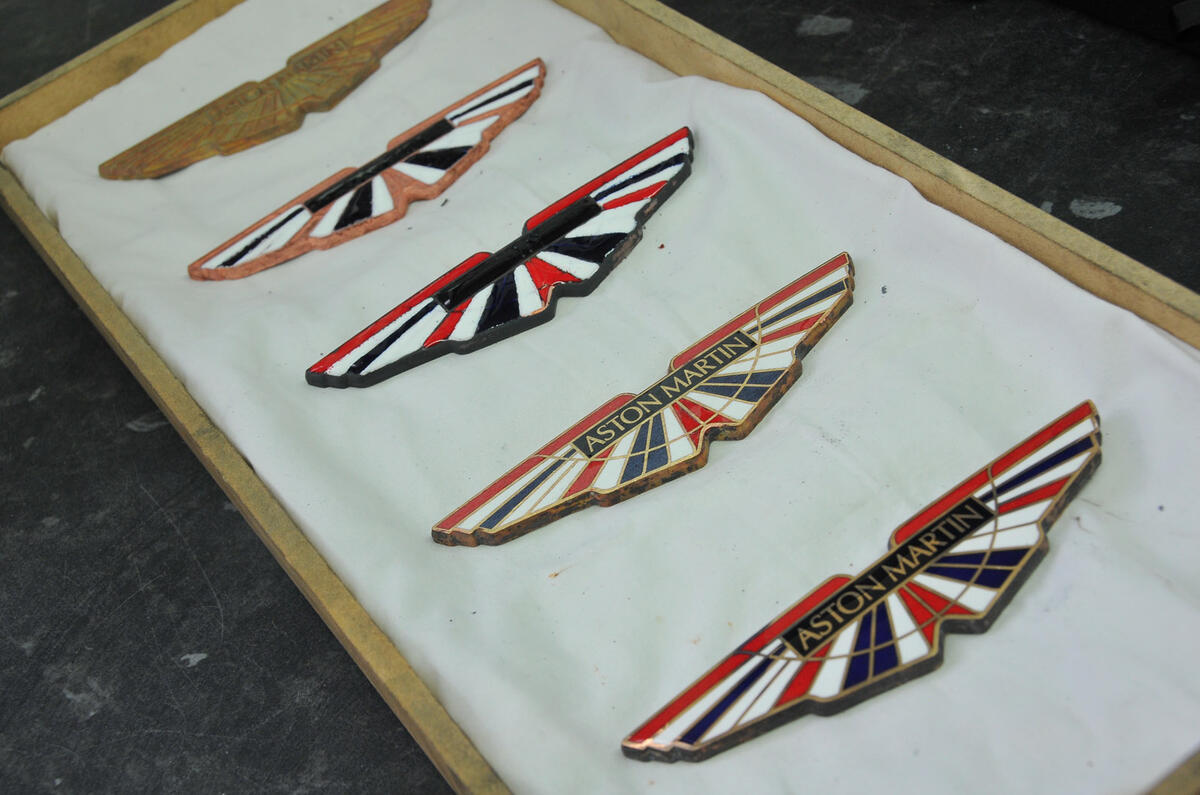
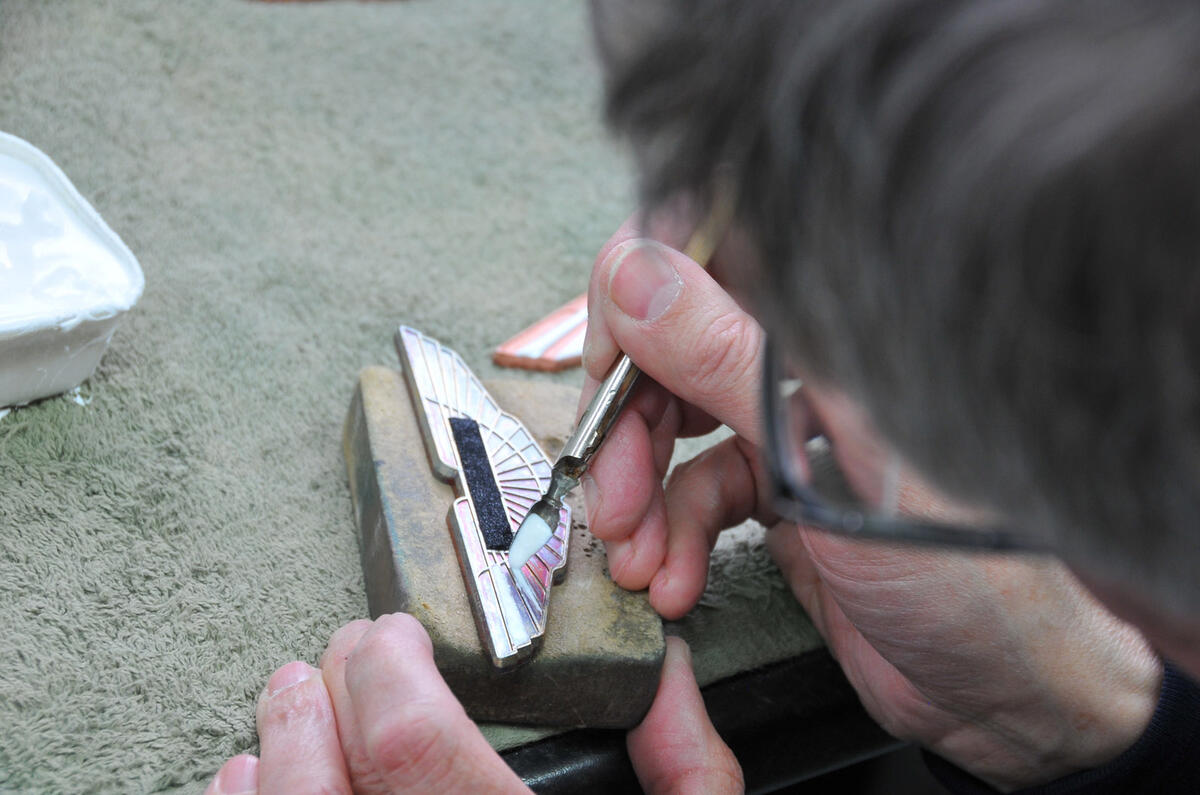
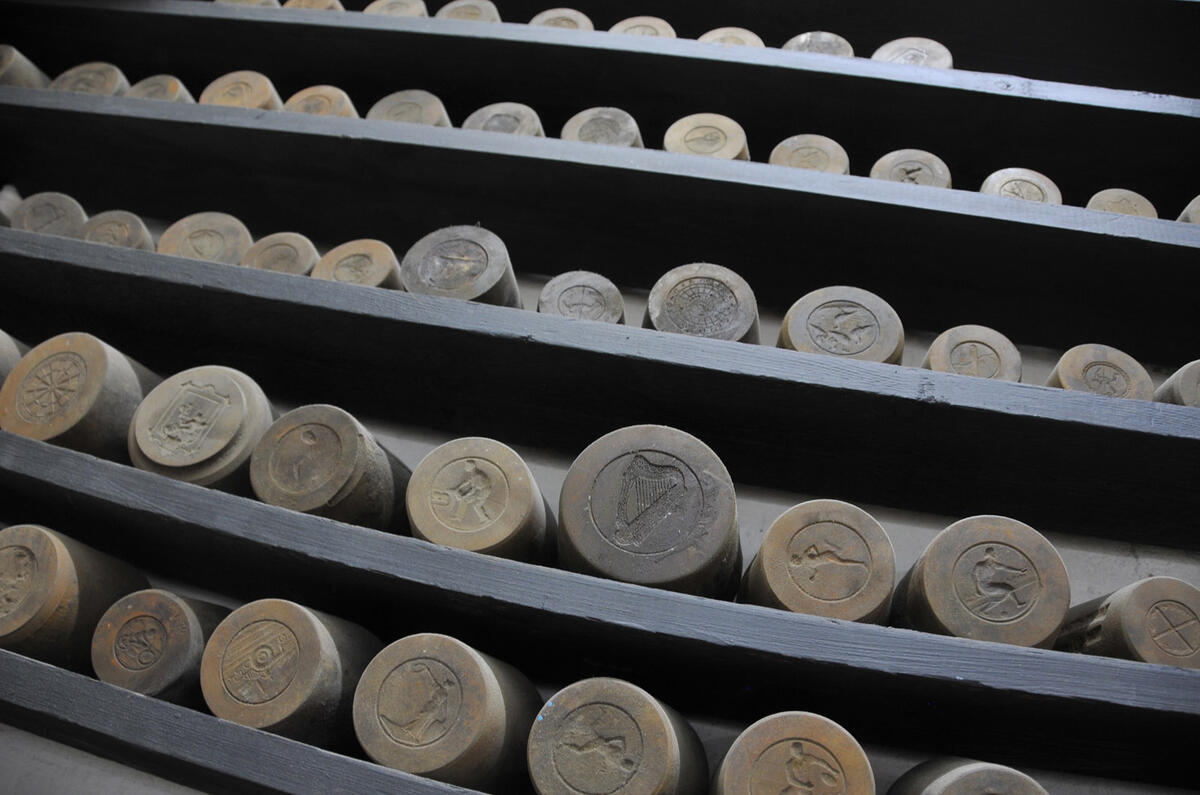
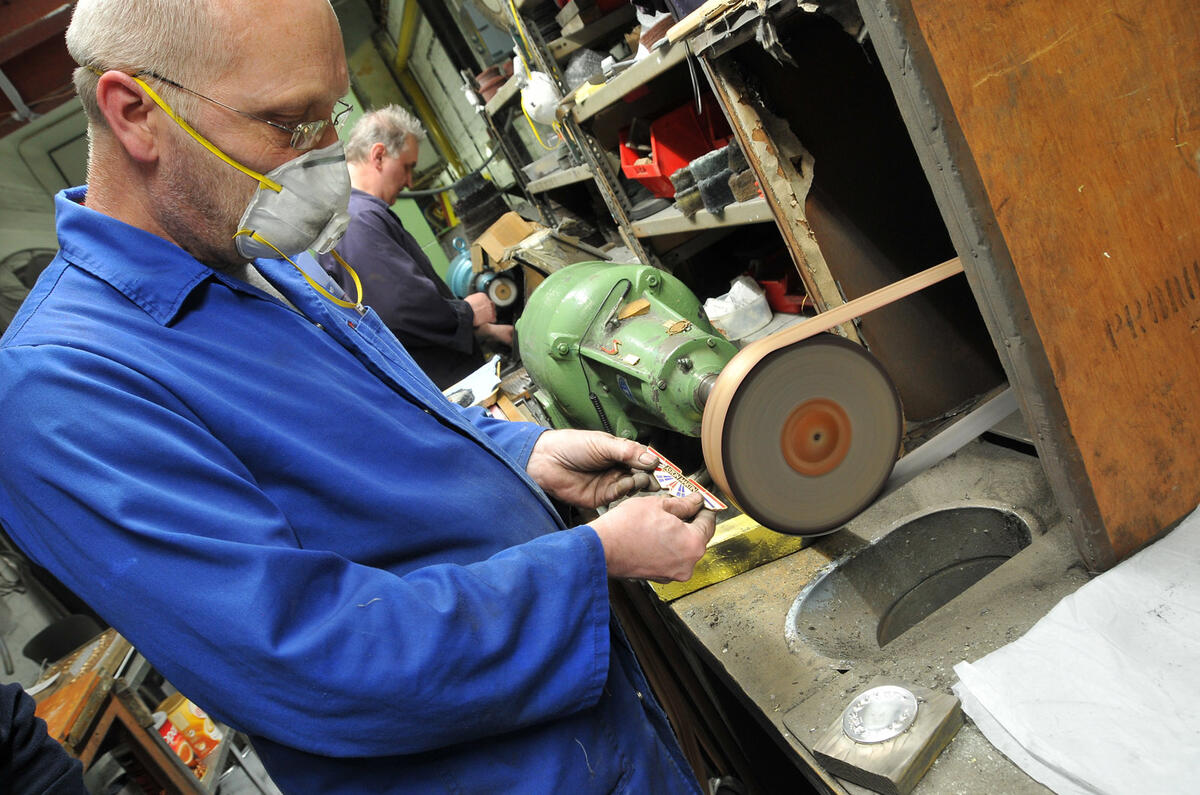
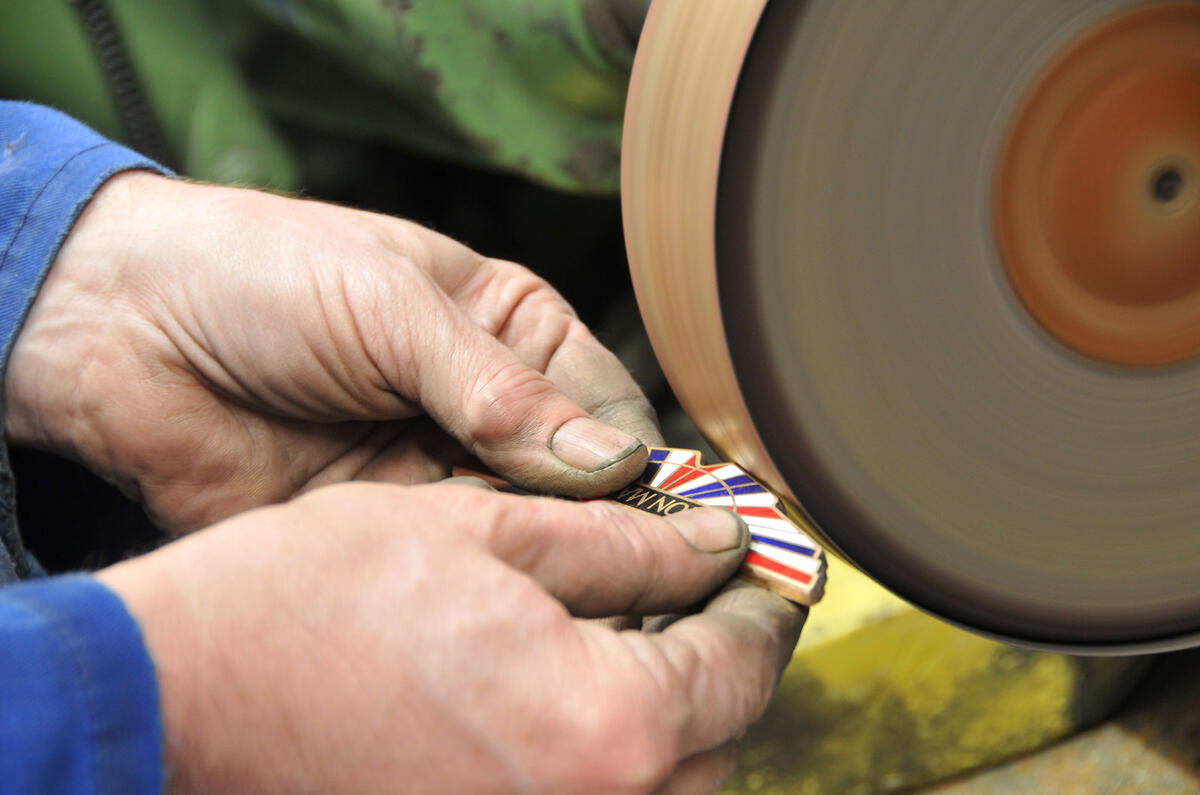
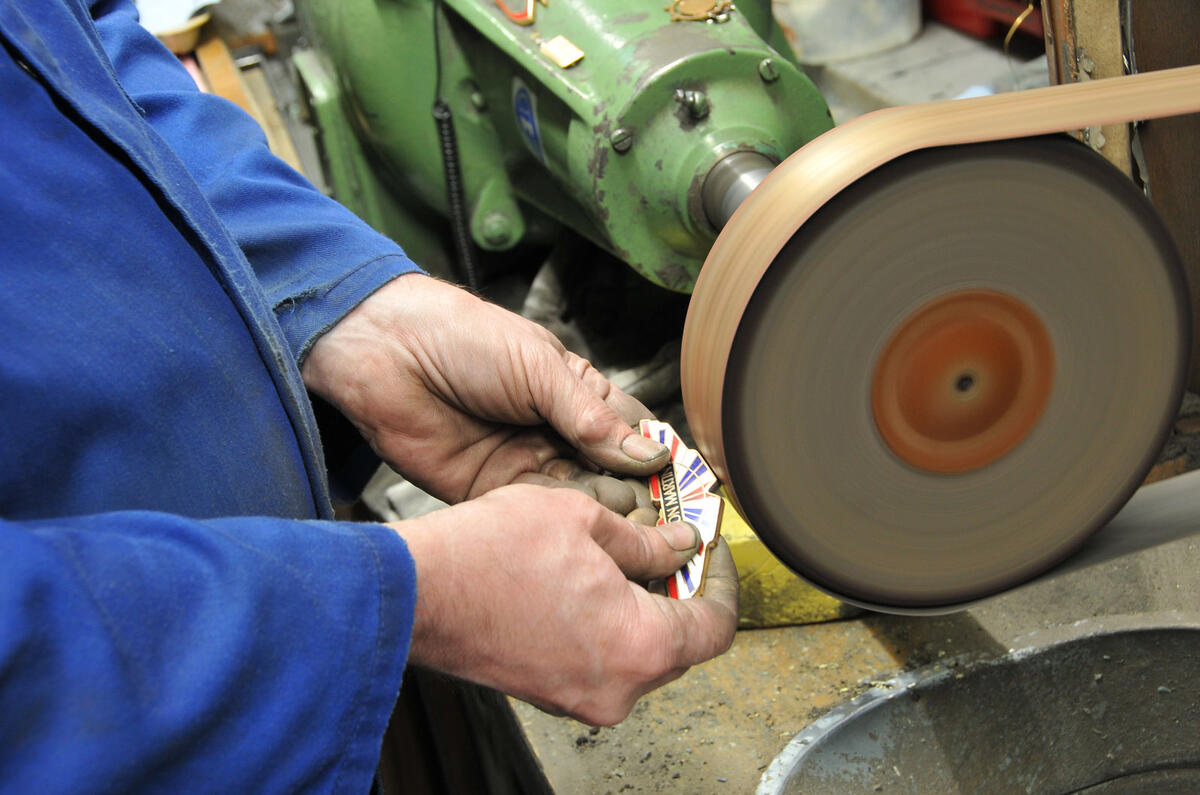
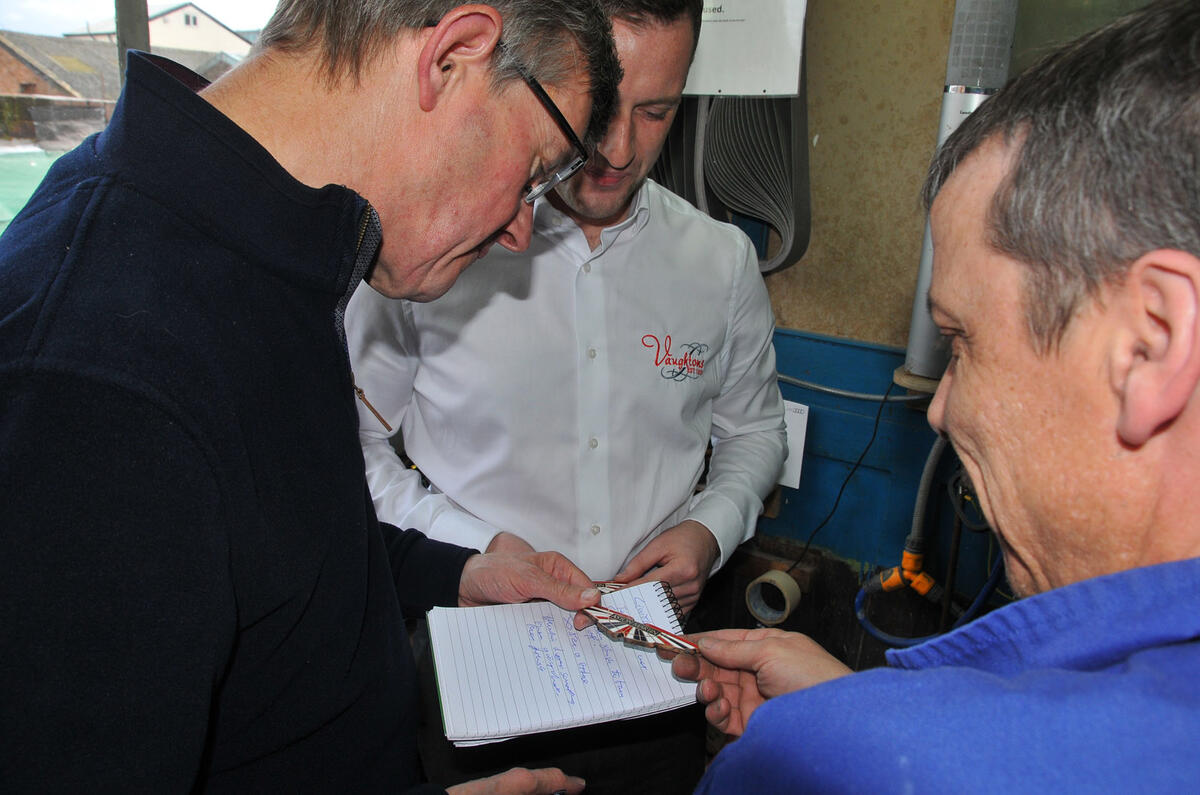

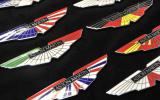
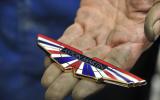
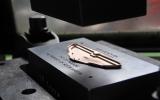
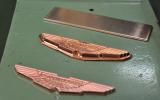
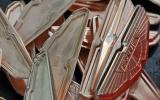
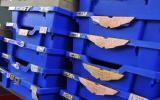
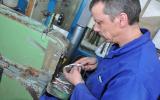
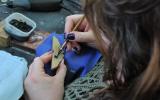
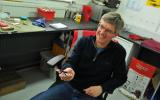
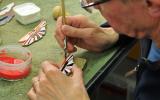
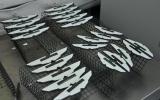

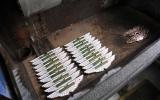
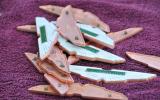
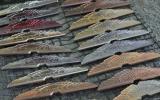
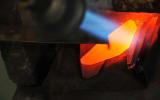
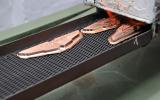
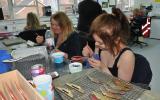
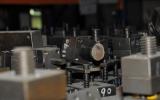
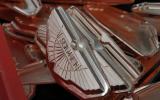
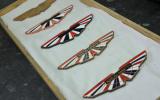
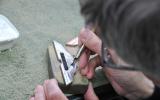
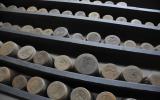

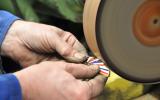
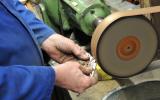
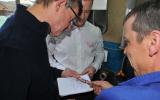



Add your comment